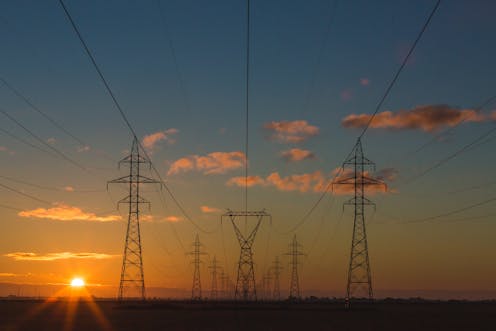New demand-response energy rules sound good, but the devil is in the (hugely complicated) details
- Written by Bruce Mountain, Director, Victoria Energy Policy Centre, Victoria University

Last week the body that governs Australia’s energy market released a draft proposal to introduce a demand response mechanism to the wholesale electricity market.
It argues the proposal will unearth some electricity users’ “latent flexibility” to prices in the extremely volatile wholesale market, and that this will potentially promote more efficient use of electricity, more secure power systems, and lower prices.
The move comes after nearly two decades of sustained campaigning, which prompts the question: why doesn’t such a useful-sounding mechanism already exist?
Read more: Managing demand can save two power stations' worth of energy at peak times
It’s a good question. If this demand-response mechanism does what it is claimed to do, it could be a significant development for the electricity markets in southern and eastern Australia. But the actual proposal is eye-wateringly complex and there is reason to be circumspect.
What is proposed and how does it work?
The Australian Energy Market Commission’s determination is that new market participants, to be known as “Demand Response Service Providers” (DRSPs), will be allowed to offer hypothetical demand reductions into the wholesale market at prices they determine. If the price they offer for such reductions is less than the price at which the market clears, the DRSPs will be paid the market price, as if they were a generator, for these hypothetical reductions.
One obvious difficulty here is the fact that the reductions are hypothetical. They are the difference between the customers’ demand if they did not respond to an enticement to reduce demand – the “baseline” – and their actual demand. Customers (and DRSPs) have an incentive to overstate the baseline, as this increases the volume of the reductions they offer and, if accepted, get paid for.
DRSPs profit from the demand reductions they sell, and so they have an incentive to seek out customers who are willing to reduce demand relative to the baseline.
Retailers that sell electricity to DRSPs’ customers will buy (from the wholesale market) the actual volume of electricity consumed and also the hypothetical demand reduction, and pay the wholesale price for both. The retailer charges the customer for the actual demand and charges the DRSP for the demand reduction at a regulated price equal to the 12-month load-weighted average wholesale price.
Read more: Baffled by baseload? Dumbfounded by dispatchables? Here's a glossary of the energy debate
This will typically leave the retailer out of pocket by an amount equal to the difference between the actual wholesale price at which they have “bought” the demand reductions, and the 12 monthly weighted average wholesale price (which will almost certainly be lower, because demand reductions will occur when wholesale prices are higher than average)
Retailers will seek to recover the shortfall from the DRSPs’ customers or, more likely, from all their customers. To the extent that they are unable to recover the shortfall, retailers are likely to try to offload those of their customers that are paid to reduce demand.
This is a simplified description of the arrangement. The complexity of the actual data and money flows between customers, DRSPs, retailers, the energy market operator, network service providers and regulators is enough to provoke a nose-bleed from the most seasoned corporate lawyers.
By now, I am sure you are wondering why all the bother with baselines and hypothetical reductions. Why not simply pay customers for actual load reductions? The answer, in short, is that the pool of possible directly contracted customers is small.
If demand response is to be extended to thousands of customers - as this proposal seeks to do - setting baselines and hence hypothetical demand reductions, with all their unwelcome consequences, is unavoidable.
Will it work?
I am not sure. It is certainly punishingly complex. The energy market operator and regulator will have their hands full ensuring that baselines are not set at a level that prints money for DRSPs and their customers, at the expense of retailers and other electricity users. If the market operator and regulator achieve this without imposing undue cost and administrative burden, this demand-response proposal has promise.
Read more: South Australia's experience contradicts Coalition emissions scare campaign
It will be fascinating to see whether DRSPs can indeed flush out the “latent flexibility” in a manner that is advantageous to themselves, the latently flexible, and the rest of us. Like many others, I will be watching with interest.
Update: Following publication, the AEMC clarified they intended to refer to the 12 month load-weighted average wholesale price of energy, rather than the simple average price. The article has been updated to reflect this.
Authors: Bruce Mountain, Director, Victoria Energy Policy Centre, Victoria University





